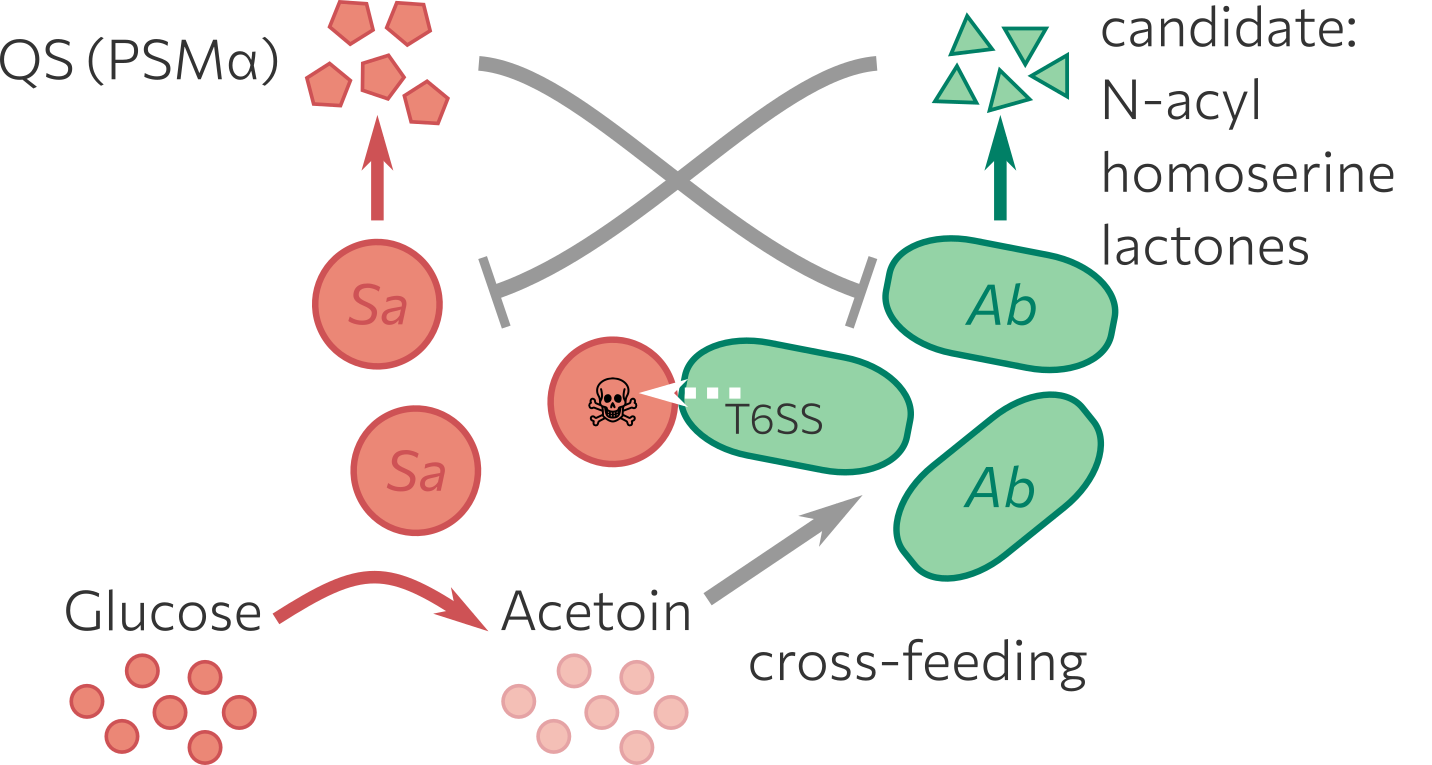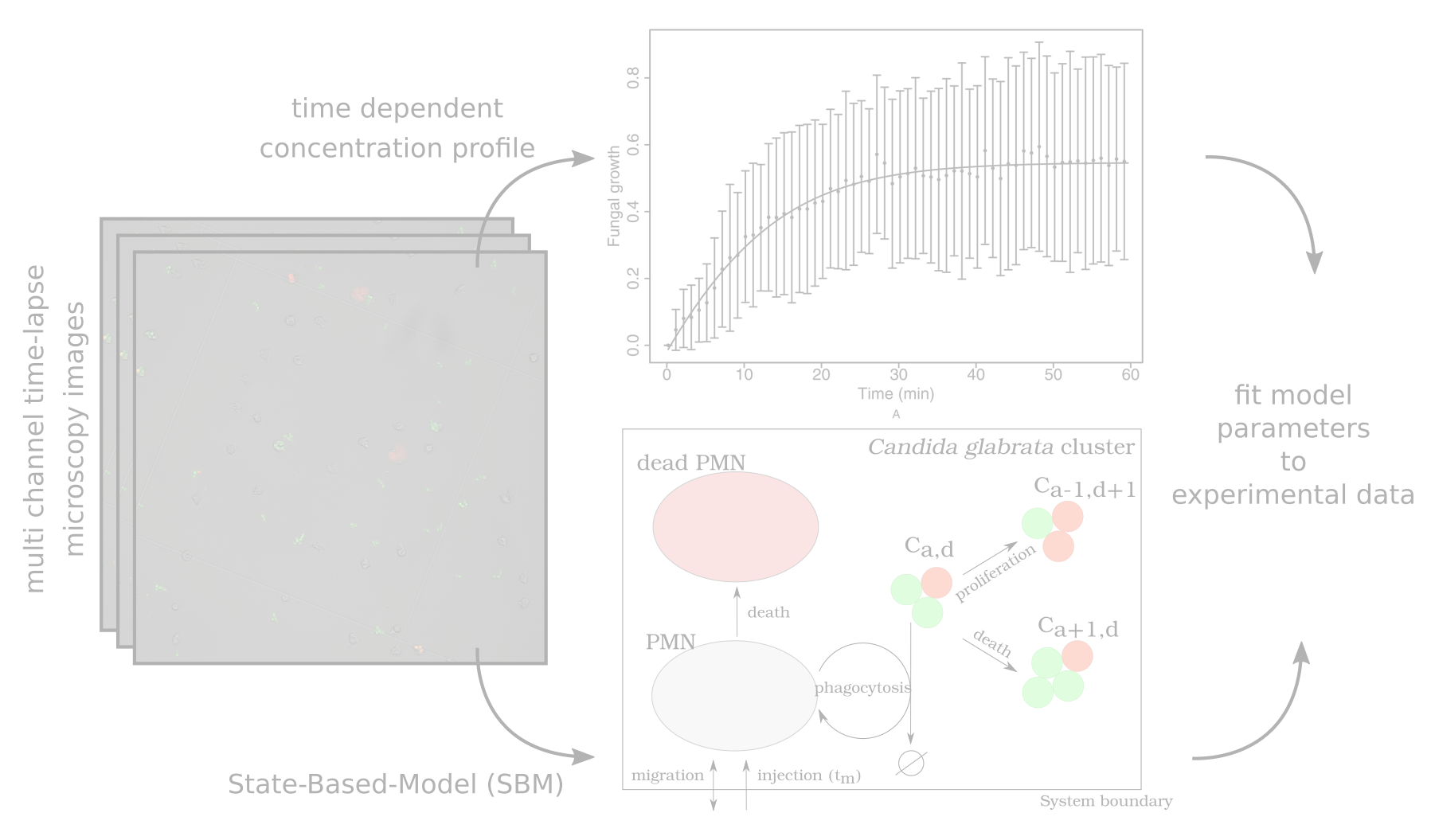Bacterial Co-infection model
Combination of wet-lab experiments and in silico modelling to explore interactions between Staphylococcus aureus (Sa) and Acinetobacter baumannii (Ab), which…
Confrontation assay model
In this project a virtual confrontation assay of polymorphonuclear neutrophils (PMN) and Candida glabrata cell cluster is modelled. Bases on…






